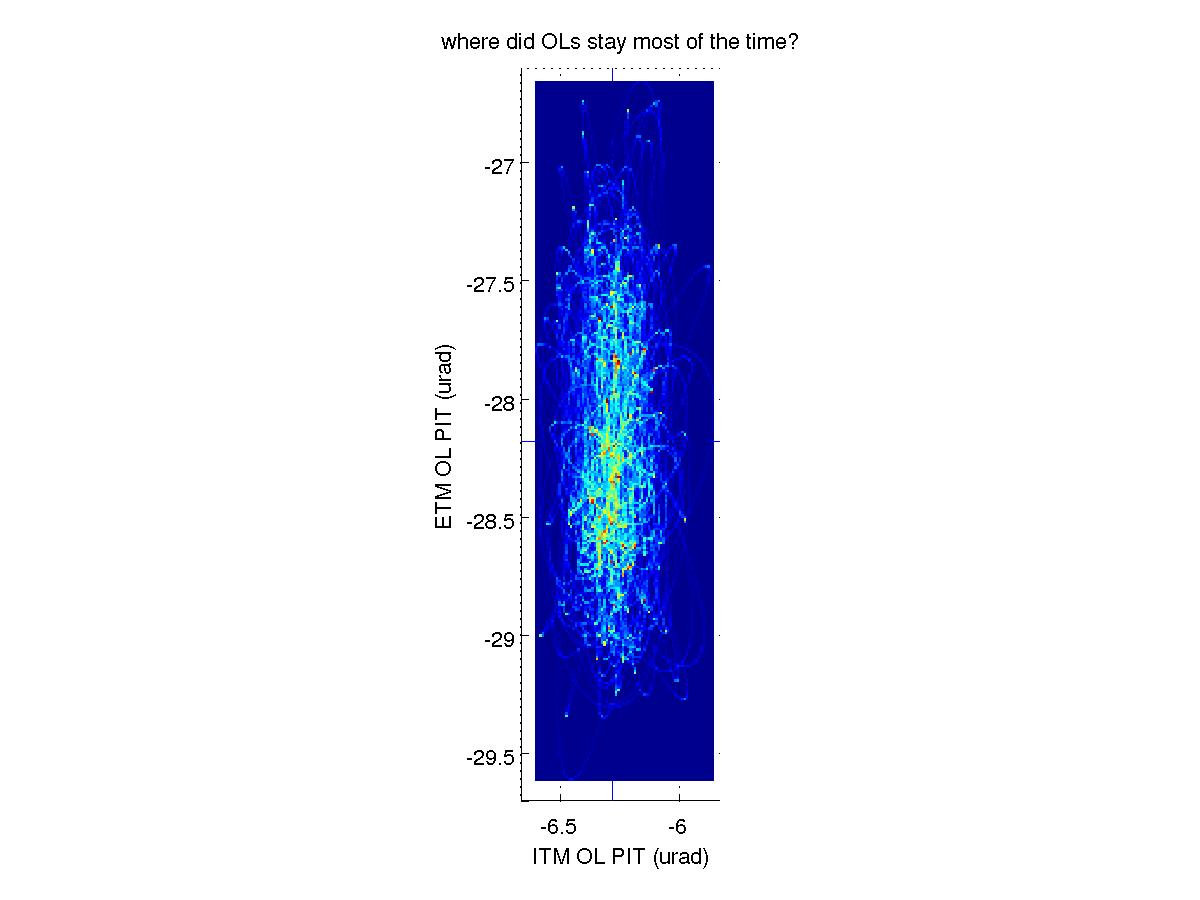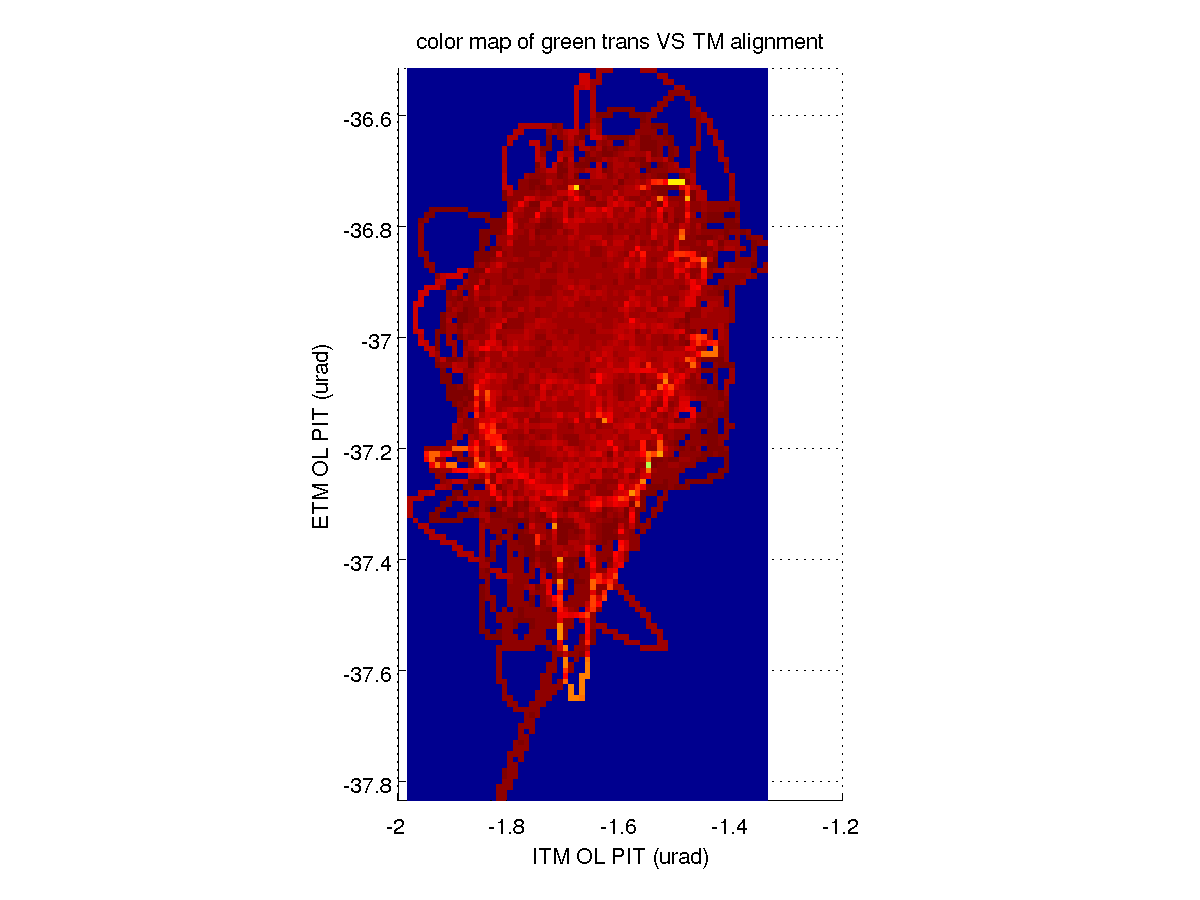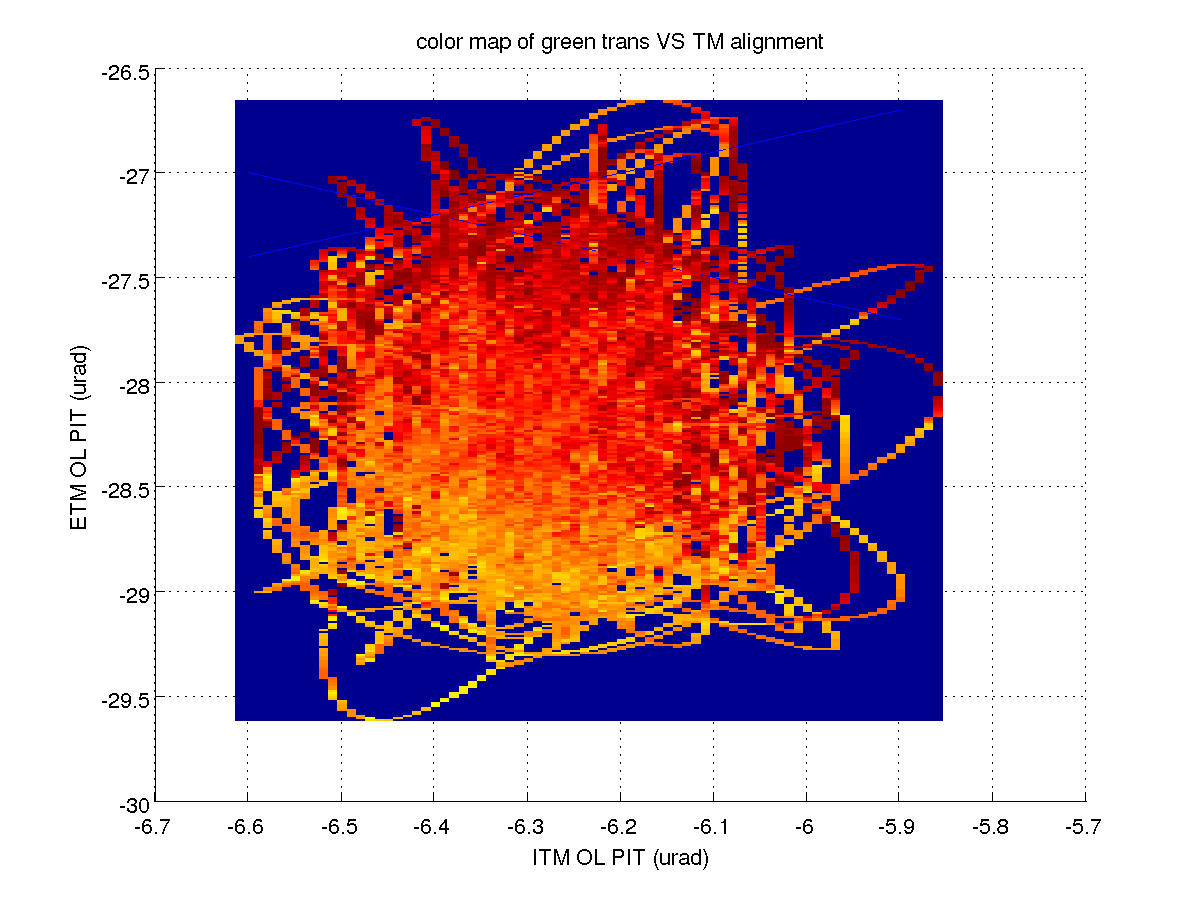We have seen that the arm cavity can sometimes lock quite stably (for example the 6 hours starting UTC Jan 24 1:40) alog 9518, and that sometimes it mode hops constantly (alog 9653). I used the scripts Keita used in alof 9653 to make a comparision of the two times. For the stable time I am using 20 minutes of data starting at 1/24/14 1:40 UTC, for a bit less stable time I am using 1hr 20min starting at 1/24/14 6:30 UTC and a slightly less stable time of Keita's plots use 5 minutes of data.
First histograms of the transmitted counts: the stable time, the somewhat less stable time, and Kieta's data:



On the 24 (first two plots) the SHG was off, so there is no 850-900 count offset on COMM_A_LF that you see in Keita's data from this morning. The transmitted power this morning was only 80% of what it was durring the stable times, even when locked to the 00 mode (if you take into account the offset from the SHG).
You can see that there was mode hopping in Keita's data. Although it seems like the "less stable" (middle) histogram has a bimodal distribution, I don't think that the small hump aroung 550 counts is due to mode hopping because it has about 80% of the power that the 00 mode has. The mode matching should not have changed between the 24th and today, and we know we didn't have more than about 30% of our power in mode mismatch (alog 9518). These are most likely drops in the transmitted 00 mode power due to alignment excursions.
Here are plots of where the PIT oplevs spent most of their time, made using Ketia's script. This morning there was about 2-3 times more pitch motion in the ETM than on the 24th (see Jeff's alog).
These are plots made using Keita's script, of the transmitted power for different oplev positions. (I didn't use the threshold to distinuish mode hopping since there isn't really mode hopping in the first two plots, and I used a smaller bin spacing of 0.1urad) In the first two plots, we seem to be exploring a plateu where the transmitted power doesn't change dramatically over 1urad in ETM pitch and 1/2 urad in ITM pitch. This morning though we were misaligned, and even with less optic motion we would have been right on the edge of the mode hopping. It seems as though we can't rely on the dither alignment when we are this misalinged, and need to tune up the alignment by hand, probably by unlocking and watching the fringes.
The first two plots suggest we can stay locked to the zero zero mode with around 1 urad pp in the ETM, maybe more. The plot from this morning seems to show that while the optic motion was large, our main problem was a DC misalingment.















